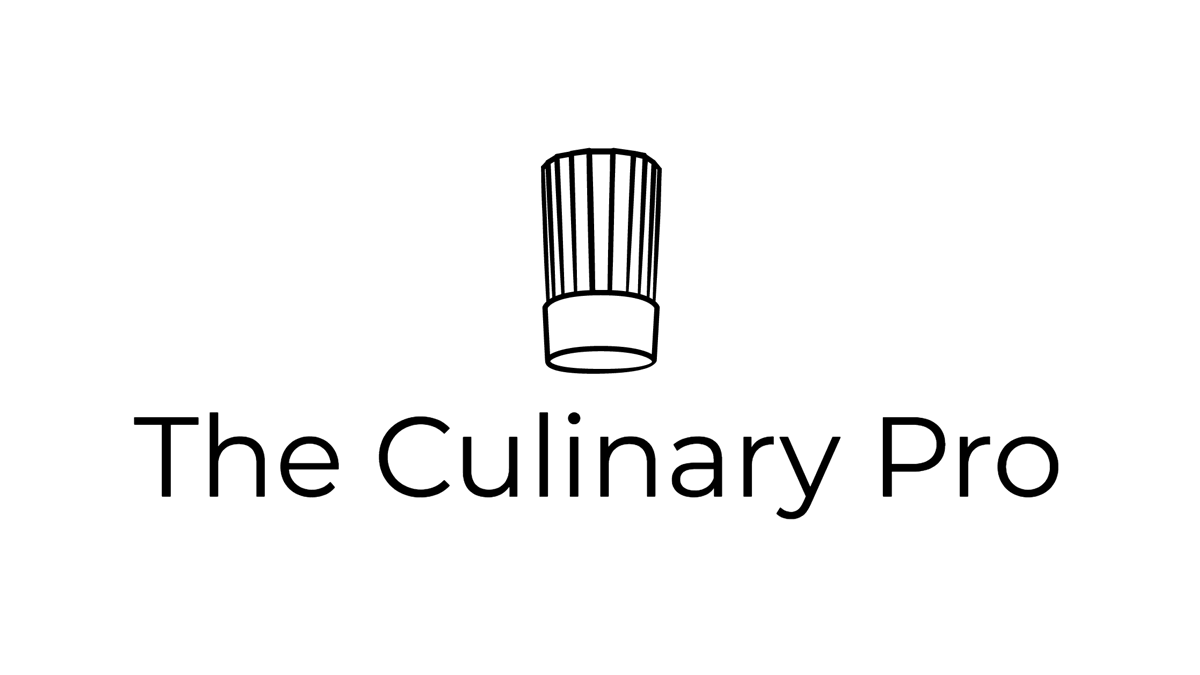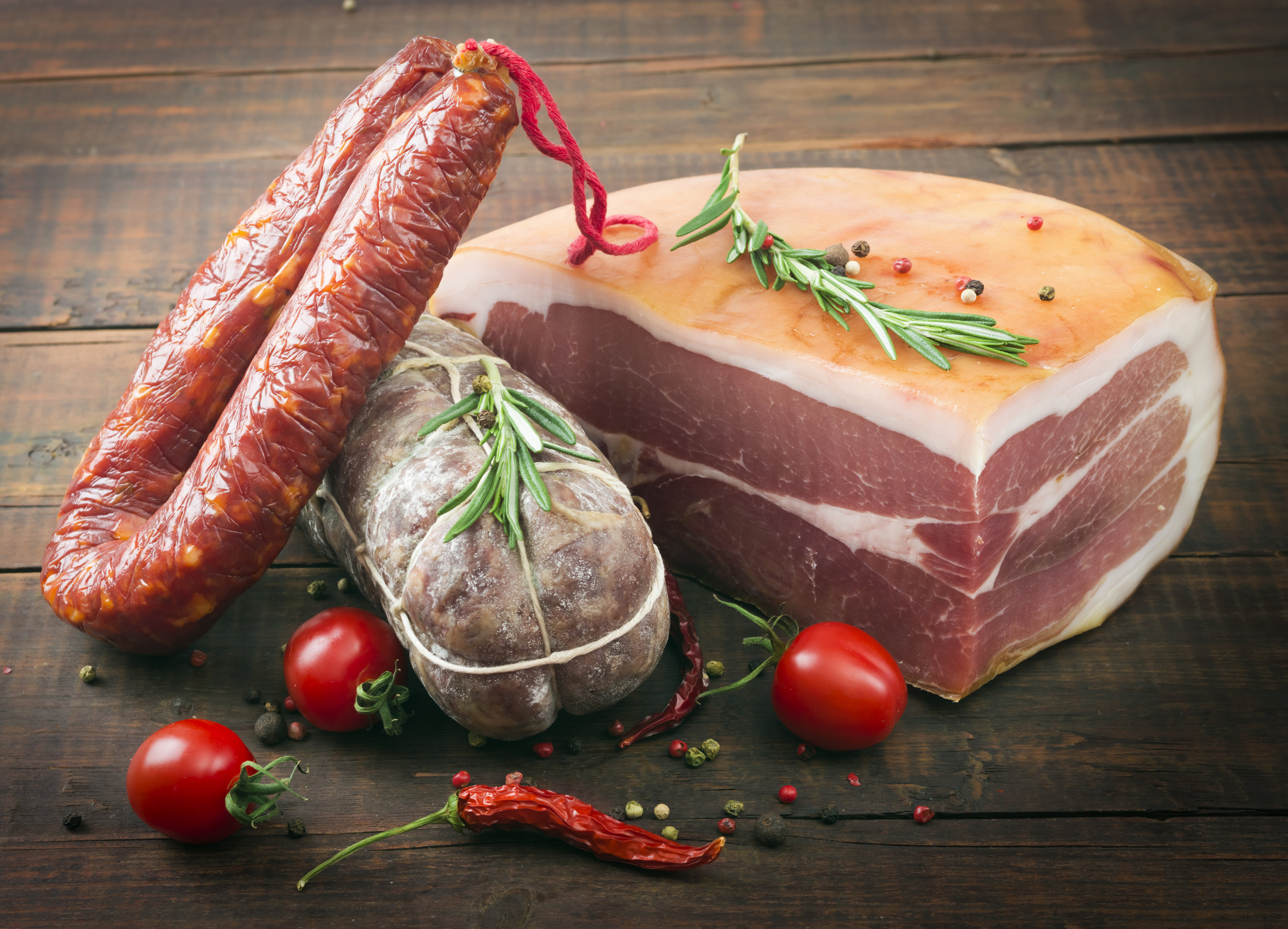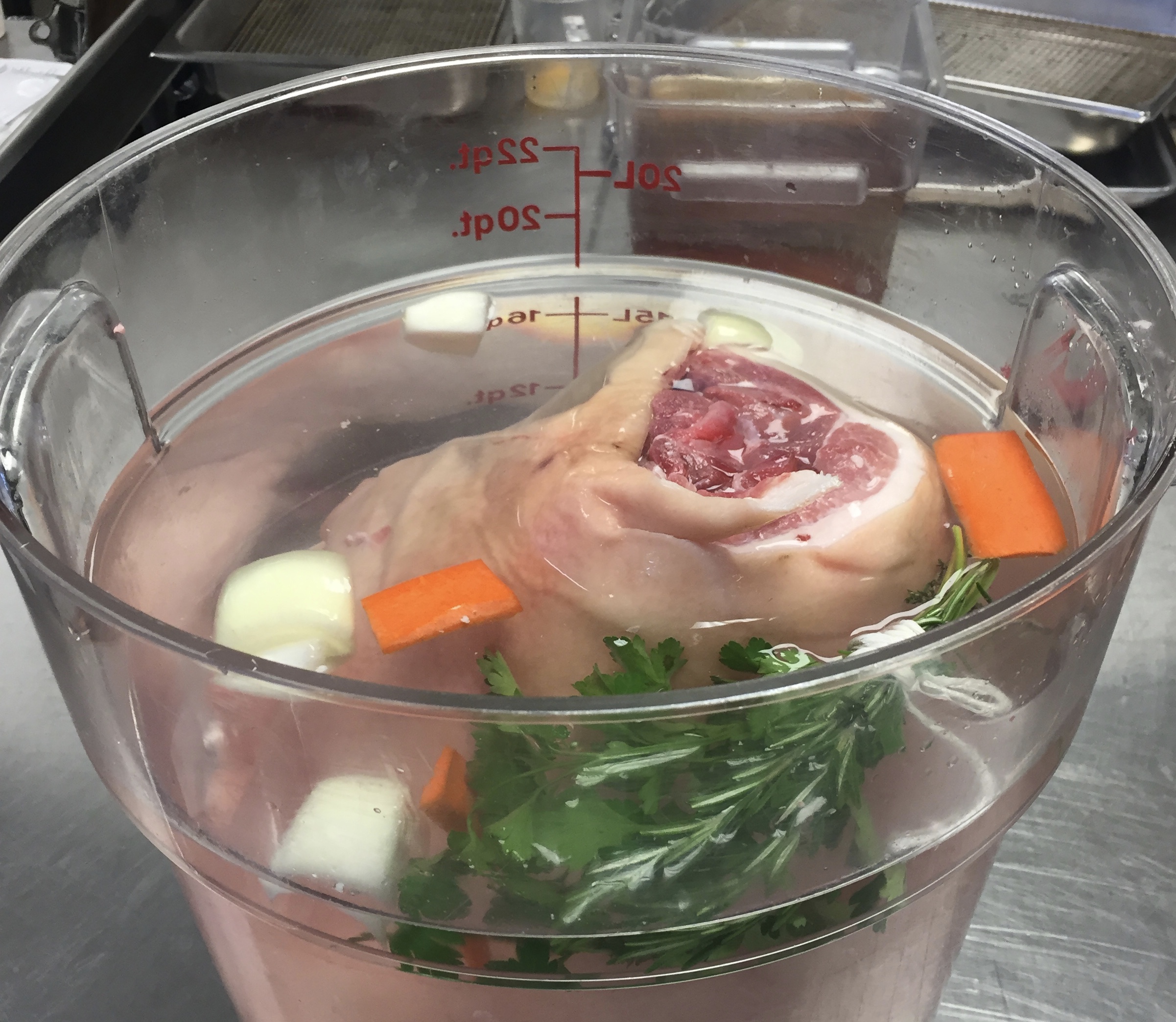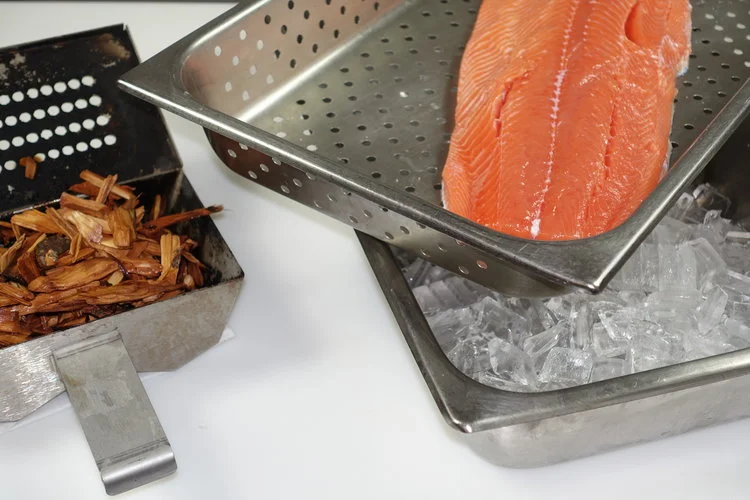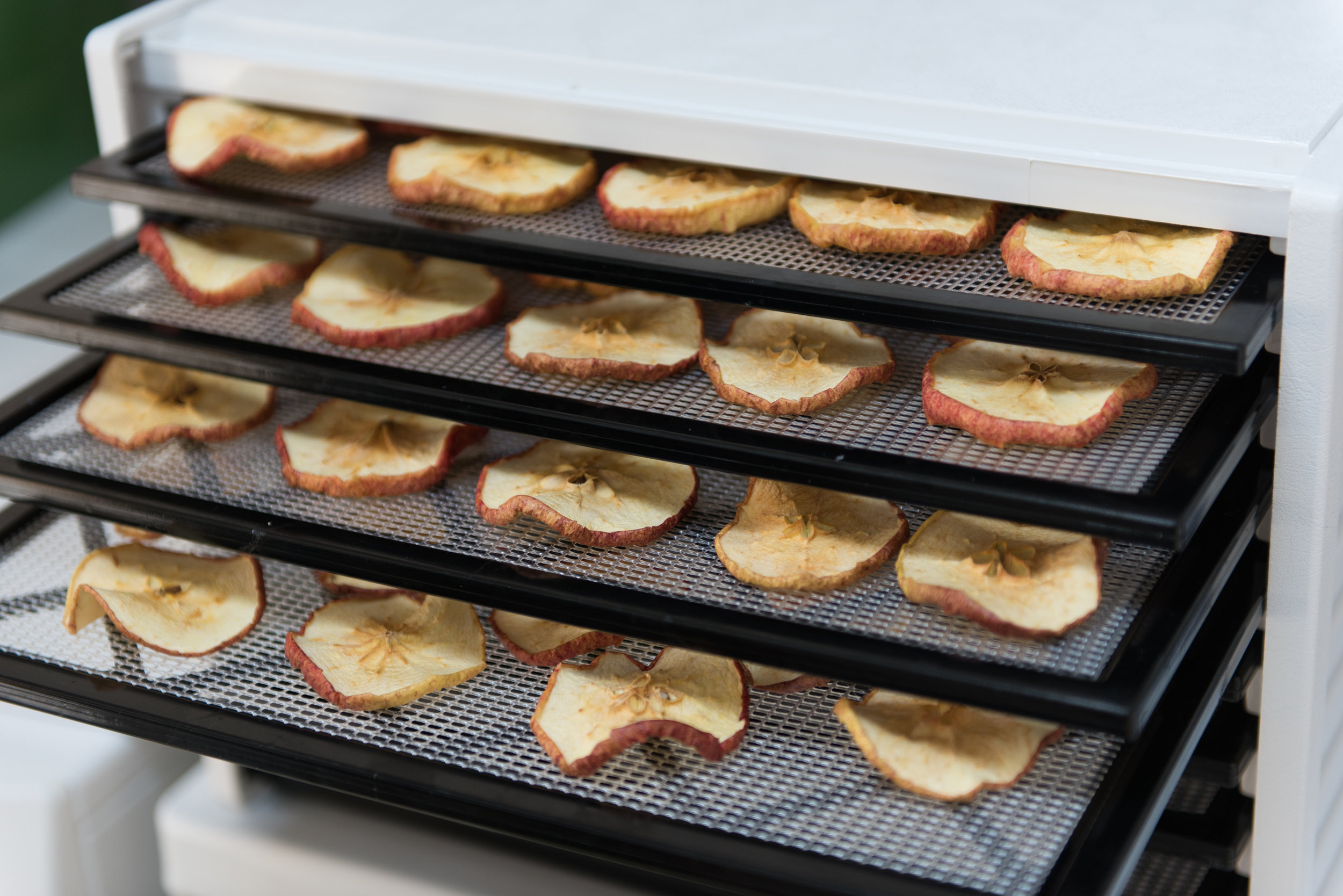Brining, Curing & Smoking
Food Preservation
Before refrigeration became commonplace, various techniques were used to extend the shelf life of foods dating back thousands of years. Salting, drying, pickling, and smoking preserved foods and transformed their taste, texture, and appearance. Today, these classic techniques are favored for their unique trans-formative effects in diverse preparations.
Observe safe food handling practices to prevent food-borne illnesses when preserving foods by these methods. Meats, poultry, and fish have specific components that create favorable and harmful bacteria and fungi. Oxygen, moisture, and ambient temperature help to accelerate their growth in foods (except for the notable exception of botulism, an anaerobic toxin that requires no air to multiply). Reducing or eliminating one of these elements, foods can be stabilized and made safe to eat.
Salting
Salt is a common food preservative favored because it naturally inhibits most bacteria and fungal growth. Ham, bacon, duck, fish, eggs, cheese, and vegetables can be salted through dry cures or wet brines for short or extended periods to achieve desired results.
Salted foods are sometimes dehydrated, as in the case of lutefisk, and then rehydrated later, before cooking. Salted hams like Prosciutto de Parma use only sea salt and time, a year or more, to dry and cure the hams. Salting can be done by rubbing the surface or burying the item in a salt bed. A salt paste or dough can also be used to encase the product.
Curing
Salt is the major component in dry cures along with other additives like sugar, seasonings, and curing salts. Curing salts also called pink salt, Insta Cure, or Prague Powder help to stabilize the pH level preventing botulism, plus they add a piquant flavor and a characteristic pink color to items like ham, bacon, and hot dogs.
Brining
A cure dissolved in water is called a brine and works on the principle of diffusion. Because the salt solution is denser than the water in the food, equilibrium is sought, thereby drawing salt and moisture into the product, adding flavor and moisture to it. Brining can be done with any meat, fish, or poultry. In most brine recipes,, a 3-5% salt ratio is standard but could be as high as 9-10%.
Pickling
Pickling is a tradition that dates back over 4000 years to ancient Mesopotamia in the Middle East, where cucumbers were first cured. Although we tend to think of pickles when the term pickling is mentioned, it applies to any foods preserved either through lacto-fermentation or through a vinegar solution. Pickled herring, popular in Europe, and ceviche, a pickled fish preparation popular in South America, are examples of dishes that use this process.
Lacto-fermentation is the process used in German sauerkraut and Korean kimchi, in which vegetables are mixed with salt and spices and allowed to ferment at room temperature for weeks. The lacto-fermentation process enhances the nutritive value of vegetables and creates new flavor sensations. This is the same process used for curing dried salami.
Pickling in vinegar is done by creating a brine solution that usually includes salt, spices, and sometimes sugar. Herbs and spices such as mustard seed, garlic, cinnamon, or cloves, are often added to either lacto-fermentation or the vinegar pickling process because in addition to adding flavors, they are also considered antimicrobial helping reduce bacteria.
Marinating
Marinades can be prepared with vinegar, wine, or citric acids and may include seasonings, salt, sugar, or oil. Whereas pickling is commonly used when no heat is applied, marinades are widely used for foods to be cooked. In addition to adding flavor to foods, marinades often are used to tenderize tough cuts of meat. The acidity will break down the meat fibers and make them tender, but care must be taken as marinating items like meats for too long can cause the texture to have a mushy feel in the mouth.
Confit
The French term “confire,” meaning “to preserve,” refers to foods cooked and preserved in jars or pots. Fruit comfitures are cooked with sugar and sometimes other ingredients to add flavor and shelf life. Traditional to the Gascony region in Southwest France, confit meats are typically salt-cured duck or goose submerged and gently poached in fat until tender. Before modern refrigeration, confits were placed in crockery pots or jars filled with cooking fat and stored in a cool cellar where they could be held for up to six months.
Smoking
Smoking is divided into either cold smoking or hot smoking. The temperature of cold smoking is below 80˚F/27˚C degrees and merely injects smoke into the product without denaturing the proteins, for example, salmon or other types of fish. In hot-smoking, the foods are cooked between 160-225˚F/71-110˚C degrees, and the proteins are denatured and thoroughly cooked. Native Americans in the northwest smoked fish by hanging them from racks above an open fire, and the American barbecue slowly cooks meats, including pork ribs, beef brisket, and sausages, similarly. Scandinavians are known for their wood plank smoking, while sausage makers use smokehouses.
Cold-Smoking begins with salt-curing and is done at 80˚F/27˚C
Hot smoking is often brined and cooked between 160-225˚F/71-110˚C
Dehydrating
Dehydrating is done with many foods including fruits, vegetables, herbs, and meats
Dehydrating is a method of food processing that is done by simply allowing foods to dry out through exposure to sun and wind. Fruits, vegetables, meats, and fish, including sun-dried tomatoes, beef jerky, and herbs and spices, are commonly preserved in this manner. Other methods include oven-drying or the use of food dehydrators.
